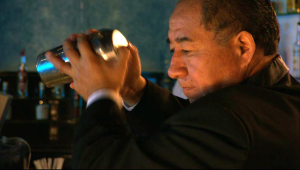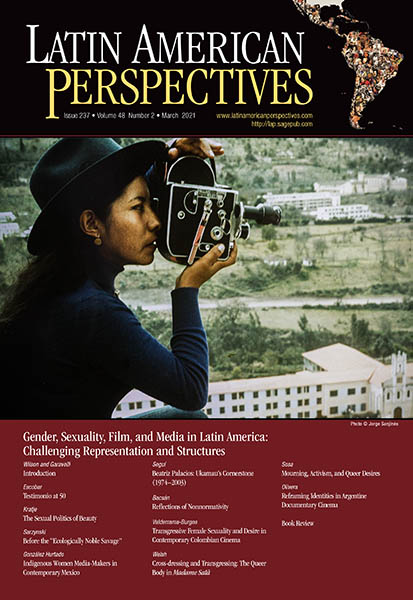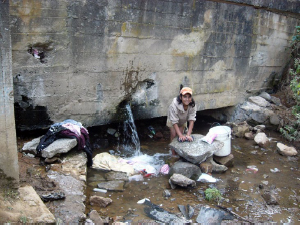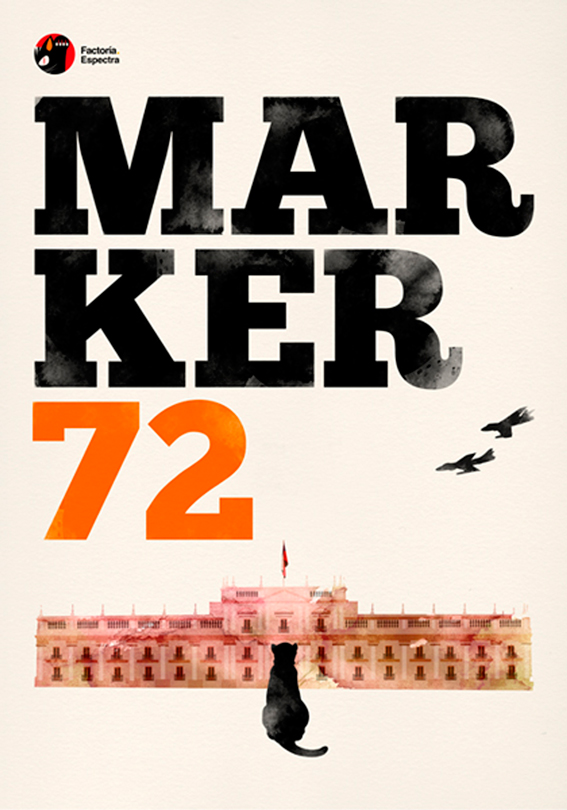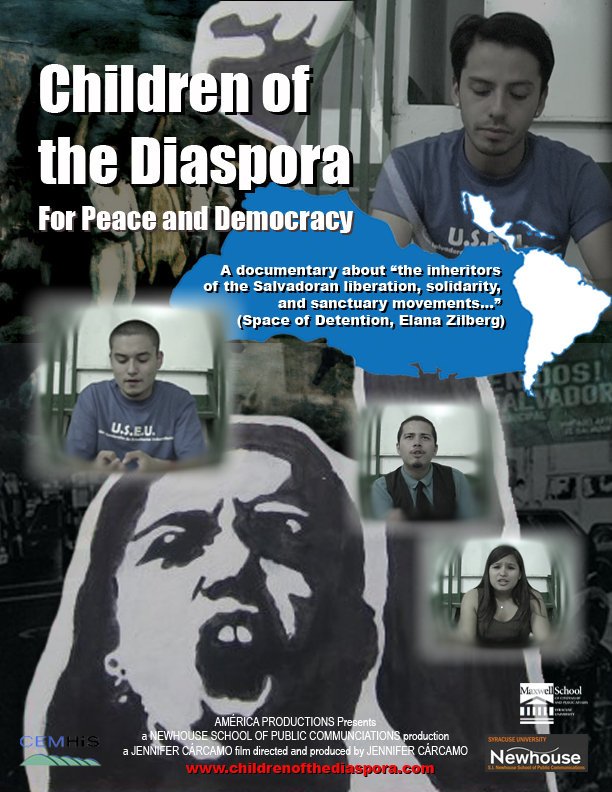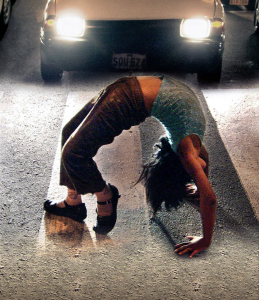 By: Kristi M. Wilson
By: Kristi M. Wilson
In Oblivion, the award-winning Dutch-Peruvian filmmaker Heddy Honigmann (Forever, Metal and Melancholy, O Amor Natural) visits her birthplace to record the stories of everyday Peruvians under Alan García’s second presidency (2006–2011). Her camera appears to float or wander at the street level, pausing on occasion to drop in upon the lives of the people it encounters there. Andrea Prates and Cleisson Vidal’s Dino Cazzola is at once a family history, a story of migration, a story of power and national identity, and an homage to filmmaking. Both films recall the Russian director Dziga Vertov’s 1929 classic documentary Man with a Movie Camera in that they are city symphonies, films that produce complex truths about a particular urban space by weaving together images and narrative fragments from the lives of its longtime residents.
At the start of Dino Cazzola: A Filmography of Brasília, close-ups of filmstrips from Cazzola’s extensive archive with dates and bits of tape on them play across the screen (Figure 1), letting us know that this documentary will address the sometimes tedious but usually surprising process of digging through archival material and that it will be self-reflexive. As in the case of Man with a Movie Camera, this film is not just about the creation of Brasília “on the boards of architects” and the life’s work of Dino Cazzola but about documenting one man’s obsession with filmmaking and fascination with the times in which he lived. The film’s opening shots oscillate between close-ups of dirty film cans from Cazzola’s archive being pried open to reveal largely decayed or moldy film stock (Figure 2) and black-and-white aerial shots of gleaming new symmetrical apartment buildings gliding past as if fresh off the conveyor belt.
An interview with Cazzola’s son Julio reveals that the filmmaker kept everything he made, even footage that the television stations did not want. The problem—and this is a current problem for national cinema traditions across Latin America—is that 70–80 percent of the footage has been completely lost through chemical decay and the lack of funds and infrastructure for film preservation. That said, there was more than enough footage for Prates and Vidal to piece together a unique film that takes audiences on a dizzying journey through the landscape of Brasília from start to finish. Their film will, indirectly, function as an archive of sorts for the many clips from Cazzola’s lifetime of filmmaking that made it into the story, ensuring a legacy in the digital age.
Dino Cazzola is discussed as a visionary who could “see ahead”—“beyond
his nose.” He was literally a man with a movie camera, and he made the most of it. His infatuation with the creation of Brasília is connected to the total destruction of his hometown, Broni, Italy, during World War II. Cazzola, it seems, came to Brazil at the end of the war with the Brazilian troops returning from fighting fascism, pretending to be a Brazilian national who had lost his documents in the chaos of war.
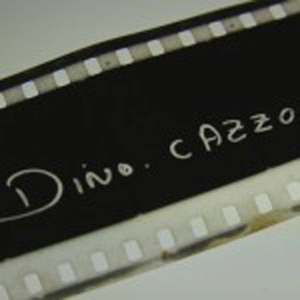
Figure 1. From Dino Cazzola: Filmstrip marked with the filmmaker’s name (courtesy of Terra Firme Productions).
Thus, there are parallels between the man and the city in this film in that both Cazzola and Brasília seemed to start fresh from ground zero. Cazzola’s role in the resistance against fascism in Europe is complicated later in the film when, already having gained notoriety as Brasília’s supreme documentarian and television journalist, he inadvertently falls into the role of the nation’s Leni Riefenstahl under the military dictatorship. Cazzola’s camera eye, however, targeted the military and the resistance alike. It did not discriminate, and therefore we are left with important film documentation of the collusion between the Catholic Church and the dictatorship, of the Queen of England’s visit to Brazil during the dictatorship, of high-level military planning meetings, and of the courageous testimony of the international superstar and resister Chico Buarque. These are images that must not be allowed to disappear.
Ironically, the visionary more famously connected to Brasília, its recently deceased architect, Oscar Niemeyer, is not mentioned in the film. Instead, his presence looms in the building frames, the mounds of rich dirt bulldozed across the screen, the electric poles going up, the construction workers coming and going, the dams being constructed, and the final result—a complete city unified by his high-modernist design. Niemeyer does not need to be mentioned because in a sense his name is synonymous with Brasília.
The film has wonderful carefree shots of everyday people eating out, dancing, walking the streets of a makeshift, corrugated-metal downtown before the official entertainment districts had been developed. One feels the presence of the already transnational auto industry in shot after shot of VW Buses and Bugs. The film emphasizes the nature of this “new Brazil” that lured first working-class people from the farthest corners of the country with the promise of jobs and then, once constructed, the political elite. The clean lines of the buildings and open meeting spaces formed part of each superblock and encouraged a mingling of all types of people who had never before come together in such large numbers.
However, during the dictatorship that followed the coup of 1964, the transparency of these open spaces became problematic for protesters. Unlike other, less symmetrical parts of Brazil, Brasília had very few clandestine places where university students and other resisters could gather, organize, or “pop in and pretend to be having a beer.” According to the plastic artist Xico Chaves, who was interviewed for the film, they retreated to the University of Brasília, which they dubbed a “free territory.” Not surprisingly, the military confronted the student movement with brute force. In addition, the sheer expanse of Brasília made it difficult to organize. Resisters had to become creative. They ended up gathering and communicating at bus stops, infiltrating provision lines to deliver “lightning speeches,” and avoiding arrest using the diplomatic immunity of congressmen’s cars and homes. One of Cazzola’s many shots of soldiers, tanks, and military marches comments on the easy symmetry between the highly controlled urban design of Brasília and military power. Soldiers in full military dress line one of the broad avenues in the superblock neighborhood. They stand in stark formation, about 10 feet apart, mirroring the spacing between the ultra-modern apartment complexes behind them.
If Cazzola’s films were an elegy to progress—he is said to have been in love with the city—Prates and Vidal’s film, in looking back, takes a more ambiguous approach. The filmmakers highlight, ironically, some of the naive propaganda accompanying the 1960 planned shift of Brazil’s capital from Rio de Janeiro to Brasília with sound clips from the period. One clip in particular stresses the utopian, philosophical design of the city’s plan. Accompanying shots of families mingling around the superblocks, a TV announcer touts the benefits of this unique new city in a voice so optimistic that it could only have emerged from the recesses of the past: “And how the people of Brasília live! Inside the city, there’s a countryside feel. There are blocks and ‘superblocks’ with grass, gardens, trees, along the traffic lanes where kids can safely let out their natural playful tendencies.” Make no mistake, the film reminds us, Brasília was not just an experiment in utopian architecture and urban planning but a new frontier for money, political power, and investment. The number of shiny new churches and modernist structures erected overnight brought with it a whiff of Empire. One can’t help but think of the Roman emperor Hadrian and his flair for “urban improvement” in the form of monumental decoration.
Oblivion is also a city symphony of sorts, but much of the footage turns its camera eye away from the colonial buildings and wealthy neighborhoods to focus on communities in the margins, filled with poor people trying to break into the working class. Like Dino Cazzola, Oblivion can be compared to Vertov’s Man with a Movie Camera, but on different grounds. Heddy Honigmann’s documentary harks back to the slivers of discord that disrupt the flow of progress in Vertov’s film: the quick shots of homeless men waking up in the streets as the sun rises over the city and the unforgettable image of a woman found sleeping on a city bench who returns the camera’s invasive stare with a damning stare of her own. Play spaces for the children in Oblivion have never consisted of planned green spaces between superblock apartment structures. In Lima poor children “play” in busy intersections (performing gymnastic feats or circus arts) for money (Figure 3). The shots in this film, unlike Cazzola’s epic aerial shots of Brasília, are closely cropped and rarely rise above the street level, giving audiences a close-up window onto the vendors (store employees, shoe shiners, knife sharpeners, etc.) performers, protesters, beggars, and others who pass their time in the city streets. Anyone the camera encounters in the street seems to be an interesting subject for the film, giving the overall story a wandering feel.
The film opens with its central unnamed narrator, a career bartender of 50 years, making a pisco sour behind the bar in the fancy Miraflores district of Lima (Figure 4). His workplace, a bar so opulent that it has a giant tank of dolphins in the middle, stands in grotesque contrast to the city’s streets and extensive slum districts. The “national cocktail of Peru,” which he has made for many presidents, serves as a metaphor for what he calls the “badly mixed” cocktail of Peruvian history, made up of “semidemocratic elections, coups, terrorism, and corruption.” This jaded but amiable mixologist/philosopher confesses that recent election choices have been like having to choose between hepatitis B and AIDS: “We Peruvians chose hepatitis B, otherwise known as Alan García, the very man who ruined the country between [19]85 and [19]90. Now he’s in power again, and I may have to make him a pisco sour one day.”
The bartender, who claims to be able to open up to the camera because he is reaching the end of his career, serves as the center of a web of interconnected city stories about life as a member of the underclasses in Lima. Oblivion opens with the camera moving through a slum neighborhood that stretches beyond the frame of the shot, disappearing into the smog that hovers above. President Alan García’s oath of office, pledging to uphold the moral role of the Catholic Church, plays under the images. The second of three central characters in the film makes his way down a long winding stairway on a steep hill lined with shacks in Lima’s unofficial parallel city. As he passes in front of the camera, we begin to follow him. He is a greeted as “maestro” by young future street performers in his neighborhood and coaches them to keep practicing as he makes his way to his workplace: a crosswalk at a crowded intersection. We learn later that he is trying to make it into the service industry and studying under the bartender, who teaches service industry classes at a local vocational school. This is one of the many ways in which the characters’ lives intersect.
The camera then lands upon and follows Mr. Cerna, one of several waiters from the Bar Cordano, a classic café in the city’s center that has been there since 1905. Mr. Cerna became one of a group of workers who took over the café when the Italian owners passed away. Their heirs did not want to pay the workers their benefits and offered them the café instead. Perhaps the most compelling portrait in Oblivion is that of the young sisters (Estefani and Lala) who perform gymnastics or juggle at a crosswalk while their mother watches and collects the money. These girls are the only source of income for this single mother of three. They are warned repeatedly by their mother to be careful. She breaks down and confesses that one of her daughters was killed while selling soup at the same exhaust-filled intersection—hit by a car running a red light and then remaining in a vegetative state for ten months. The shots of Lima’s upscale restaurants and shopping malls always feature a worker—a waiter, a nanny, a window washer, shop worker, a street entertainer.
Dictatorship and state-sponsored terrorism are an important part of Oblivion’s collection of interwoven stories. A waiter from an upscale restaurant gives a tour of his humble home during which he plays one of his favorite hometown songs, “Flowering Broom,” about the military repression of Huantinos. After the song, he tells about the vicious murder of two of his female cousins in Huanta by either the special military police or terrorists.
Figure 4. Bartender making a pisco sour (courtesy of Icarus Films).
Honigmann’s film shows us that for those left behind in the wake of neoliberal economic policies, the terror of trying to survive plays out in long, slow periods of waiting for life to get better. At one point in the film, a shoe repairman is asked to recount the worst time period in his life. He claims that Alan García’s first presidency (between 1985 and 1990) and the hyperinflation that accompanied it affected him more than terrorism. Unlike the interviewees in Prates and Vidal’s film, the characters in Oblivion have never been asked their opinions. Several of them, recalling traumatic events, break down on camera while recounting their stories. At times the takes in this film are long, emphasizing the slow passage of time and the boredom of un- or underemployment. The most poignant interview comes toward the end of the film when the director asks a 14-year-old shoeshine boy if he has any pleasant memories. After thinking about it for a few minutes, he says no. He offers the same response when asked if he has any negative memories. He is a boy without memories. Another girl’s mother buys her a licuado made with frog meat in the hope that it will improve her memory.
There is an undercurrent of anxiety in this film—a fear, in the words of a blind street performer, that memory, with youth, will disappear “into the distance.” The reappearance of Alan García on the political stage and the destruction of can after can of Cazzola’s documentary footage mark a dangerous loss of memory, an oblivion that these filmmakers address in their own ways in these two poignant portraits of Latin American cities.
Downloaded



